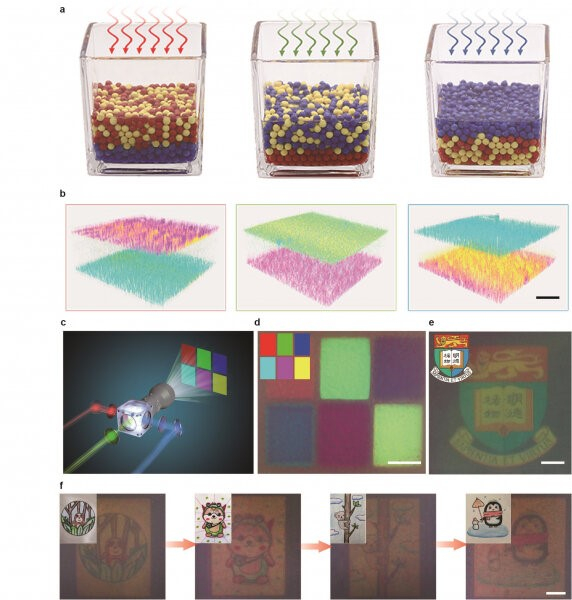 |
|
Figure 1. Three-dimensional phase segregation and photochromic colloidal swarm |
In nature, the skin of cephalopods (animals with tentacles attached to the head) exhibits unparalleled camouflage ability. Although intricate in nature, this colour-changing ability is fundamentally based on a mechanical mechanism in which pigment particles are folded or unfolded under the control of radial muscles.
Inspired by this natural process, a research team led by Dr Jinyao TANG from the Department of Chemistry at The University of Hong Kong (HKU), develops a novel wavelength-selective intelligent colloid system to achieve light-controlled multi-dimensional phase segregation in collaboration with scientists from Hong Kong University of Science and Technology and Xiamen University.
In this work, Tang’s team designed a simple wavelength-selective TiO2 active microbeads system based on their previous research on light-powered microswimmers. The team formed dynamic photochromic nanoclusters by mixing cyan, magenta and yellow microbeads, achieving photochromism on a macro scale. This macroscopic photochromism relies on light-induced vertical phase stratification in the active microbeads mixture, resulting in the enrichment of coloured microbeads corresponding to the incident spectrum.
"The research findings have contributed significantly to advancing our knowledge of swarm intelligence in artificial active materials and have paved the way for designing innovative active smart materials. With this breakthrough, we anticipate the development of programmable photochromic ink that could be utilized in various applications such as e-ink, display ink, and even active optical camouflage ink," Dr. Jinyao Tang said. Their research result has recently been published in the journal Nature.
Link of journal paper can be accessed from: https://www.nature.com/articles/s41586-023-05873-4
